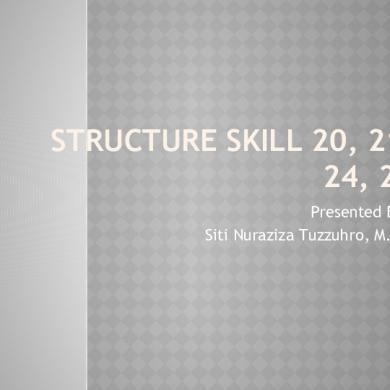* The preview only shows a few pages of manuals at random. You can get the complete content by filling out the form below.
Description
Inorganic Chemistry Prelim Lab 3: Atomic Structure
Masil, Toni Justine P. Ramirez, Roie M. S.Y. 2021-2022
Prelim Lab 3: Atomic Structure Abstract Atomic structures are an important precursor to understanding chemical bonding and chemistry. Atomic Structure is a fundamental part of Chemistry. Knowing about the electrons, neutrons, protons can help you understand what is going on in chemistry. The structures determine the molecular geometry of a compound by portraying the spatial arrangement of atoms and chemical bonds in the molecule. This provides chemists with an important visual representation of a chemical formula. Having this necessary background knowledge helps scientists understand and explain the complexities of the objects being observed. In this experiment, for instance, examining the composition of rocks retrieved from an exoplanet reveals that it was or is capable of sustaining life. Introduction The laboratory simulation tackled the main ideas concerning atom, ions, elements, and their structures. Atoms are defined as “the basic building blocks of matter”. They are the smallest constituent unit of matter that possess the properties of the chemical element. Atoms don’t exist independently, instead, they form ions and molecules which further combine in large numbers to form matters, the objects that we see and feel. The atomic structure of an element refers to the constitution of its nucleus and the arrangement of the electrons around it. Primarily, the atomic structure of matter is made up of protons, electrons and neutrons. The protons and neutrons make up the nucleus of the atom, which is surrounded by the electrons belonging to the atom. While elements are substances whose atoms all have the same number of protons: another way of saying this is that all of a particular element's atoms have the same atomic number. Elements are chemically the simplest substances and hence cannot be broken down using any chemical reactions. The main objective of the laboratory simulation was to deepen the participants understanding about atoms and their structure. Isotopes were also discussed later in the simulation – isotopes can be defined as the variants of chemical elements that possess the same number of protons and electrons, but a different number of neutrons. Moreover, the laboratory simulation involved an activity where the students were to survey an exoplanet location and collect soil samples in order to formulate initial observations about how the soil may have formed and if it could or have harbored life. Additionally, the findings contributed to the very controversial topic about life on another planets.
Prelim Lab 3: Atomic Structure Materials and Methods The activities mainly utilized the holo-table. Firstly, the participants created an atom with an atomic number equal to 2, an atom of helium. Second, they created an atom with a mass number of three wherein the total number of protons and nucleus equaled to three. Next, they created cations and anions by adding and removing ions from the atomic structure. Afterwards, the participants were sent to an exoplanet to collect soil samples. With the help of the rover’s robotic arm, rock samples were taken and sent back to the lab. Upon learning more about the elements, specifically magnesium, aluminum, potassium, and iron, the participants identified that the aforementioned elements were present in the rock samples. The students were then tasked to create their own isotopes back on the holo-table, modifying the numbers of subatomic particles. Participants then proceeded in the work bench to analyze the rocks taken from the exoplanet. Using a pipette, the students took some drops of acetic acid from the beaker and poured it on to the rocks. A reaction took place, causing the rocks to release carbon dioxide into the air. Results Other than the knowledge obtained about atoms and their structures from the laboratory simulation. The experiment, dropping acetic acid on the surface of the rocks retrieved from the exoplanet, showed a chemical reaction causing gas to come out of the rocks. Discussion The acid released carbon dioxide gas as the white rocks contains carbonates. The carbonates naturally form in the presence of carbon dioxide and liquid water, and therefore provide important evidence for the presence of liquid water and possibly life in the exoplanet. Both the oxidation of iron and carbonates provide valuable information because they are important elements for organisms to survive.













